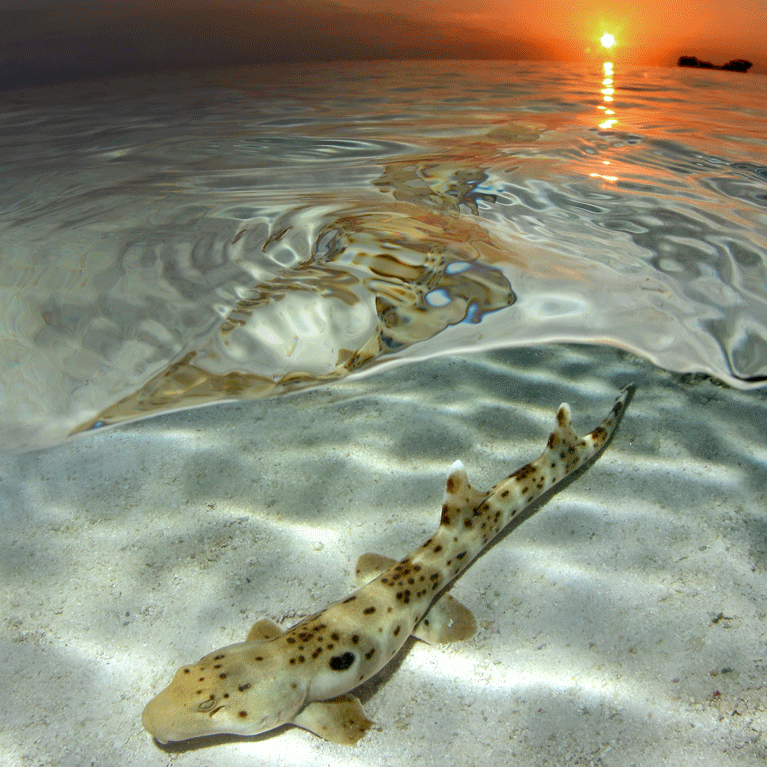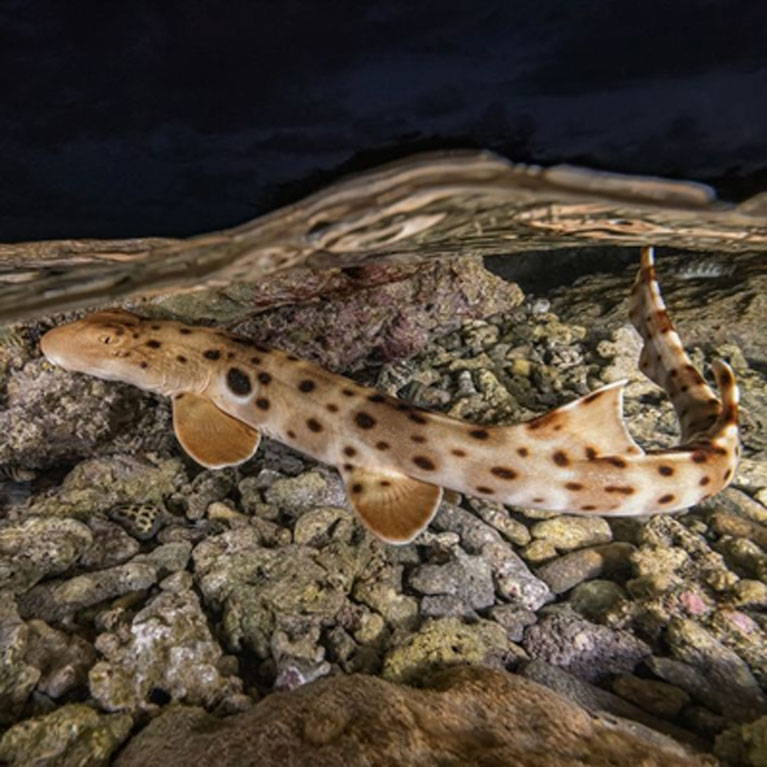Can epaulette sharks become climate change chameleons?
Aaron is testing how epaulette sharks respond to different temperatures that model future climate scenarios. He wants to understand the genetics that underpin how epaulette sharks might respond. These sharks already have adaptations that allow them to live in extreme environments, as when they are exposed to low oxygen levels and high temperatures at low tide. How do they do this? And how might this make them resilient in the face of change? Aaron believes that this information is vital to predict the success of different sharks and rays in the future.
Having grown up in a small rural town along the Atlantic coast of the USA, I’ve always had an intimate connection with the natural world and the wonders that fill it. There weren’t many neighbourhood kids around to make friends with, but there was a vast richness of forest, streams and rivers to explore and find adventures in. My academic interests align strongly with my passion for conservation science, and my aspiration to pursue an academic research career in marine biology drives my desire to make a profound positive impact on the health of the planet and on...


Can the epaulette shark outwalk climate change?
To determine the critical mechanisms that contribute to resilience to various ocean-warming scenarios in a model indicator species, the epaulette shark.
Ultimately, the capacity for biodiversity to conform to new environmental conditions, which is driven by a species’ ability to compensate physiologically, will be a primary deciding factor as to whether species are lost to extinction or possess a fighting chance in an uncertain future. It is imperative to establish a comparative baseline by researching candidate species to identify species related to them that may be susceptible or resilient to ocean warming.
Climate change has emerged as the number one threat to the natural world and especially to vulnerable coral reef ecosystems that support more biodiversity per unit area than anywhere else on the planet. Since coral reefs are projected to decline 70–90% by 2050 as sea surface temperatures increase by 1.5 °C, it has never been more vital to preserve their endemic biodiversity as the last line of resilience in the face of human-induced change. A key contributor to the richness of biodiversity within an ecosystem is the presence of apex and mid-ranked predators that exert the top-down pressure vital to the integrity and balance of sensitive environments. Elasmobranch fish (sharks, skates and rays) often fulfil this role in marine ecosystems, yet they are some of the most imperilled species because they reproduce slowly and suffer the lethal consequences of stress induced by humans. Among elasmobranchs, the epaulette shark shows adaptations to counteract the harmful effects of oxygen-deficient and low pH environments, which are characteristic of the reef flats where it lives. It also encounters dramatic daily temperature fluctuations, mirroring those predicted to be prevalent by 2100. These circumstances provide a perfect opportunity to utilise the epaulette shark to identify traits that may be key for elasmobranchs to adapt to environmental change. The question we are asking is, what are the critical mechanisms in the epaulette shark that contribute to resilience to warming? This multidisciplinary study aims to link gene expression changes, and the mechanisms underpinning them, to the physiological performance of cells and organisms in future warming scenarios. Such invaluable information about the capacity for adaptation and the potential for physiological compensation to counteract warming stressors is critical to predicting the success of elasmobranchs, and the ecosystems they support.
- To examine how critical movement and cardio-respiratory performance metrics are modulated by increased temperatures consistent with future and current climate change.
- To reveal the genetic mechanisms underpinning physiological changes in performance within geographically distinct populations of a key bio-indicator species, the epaulette shark.

